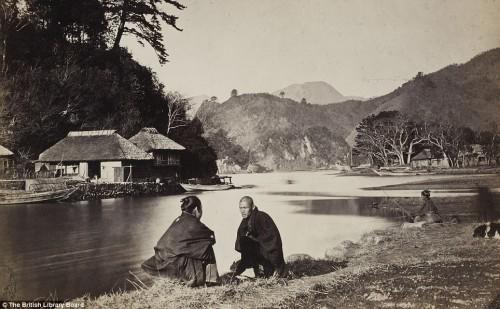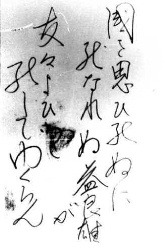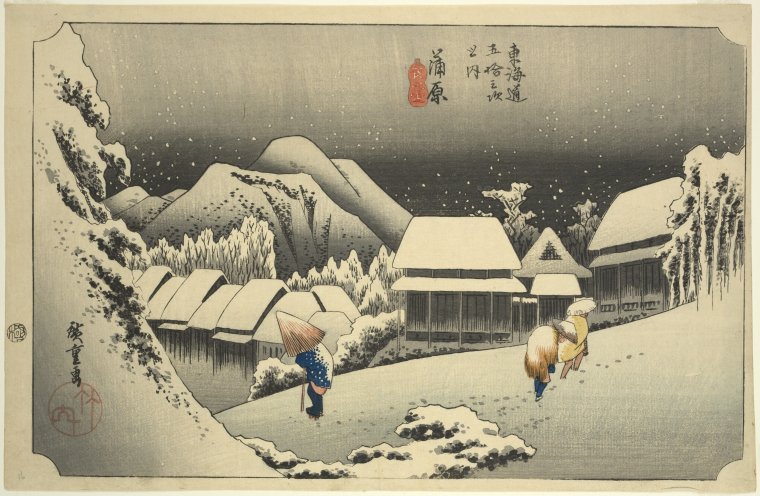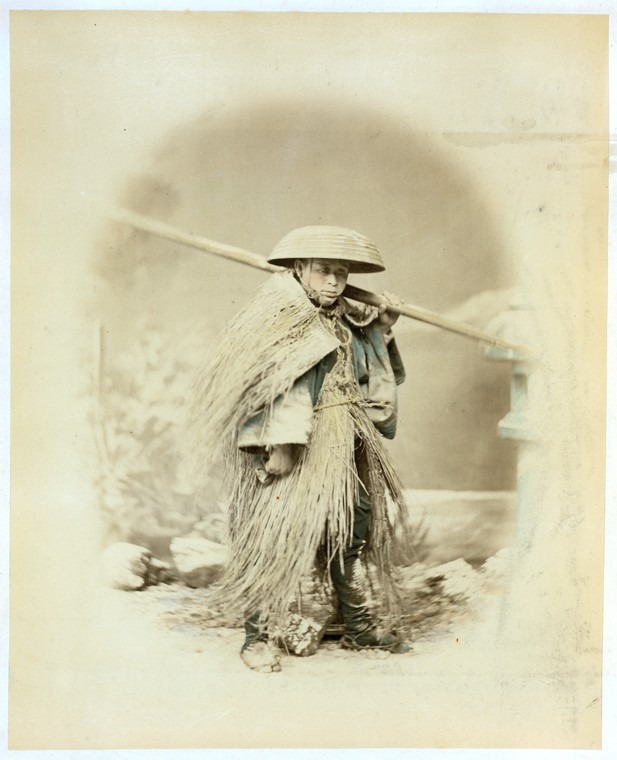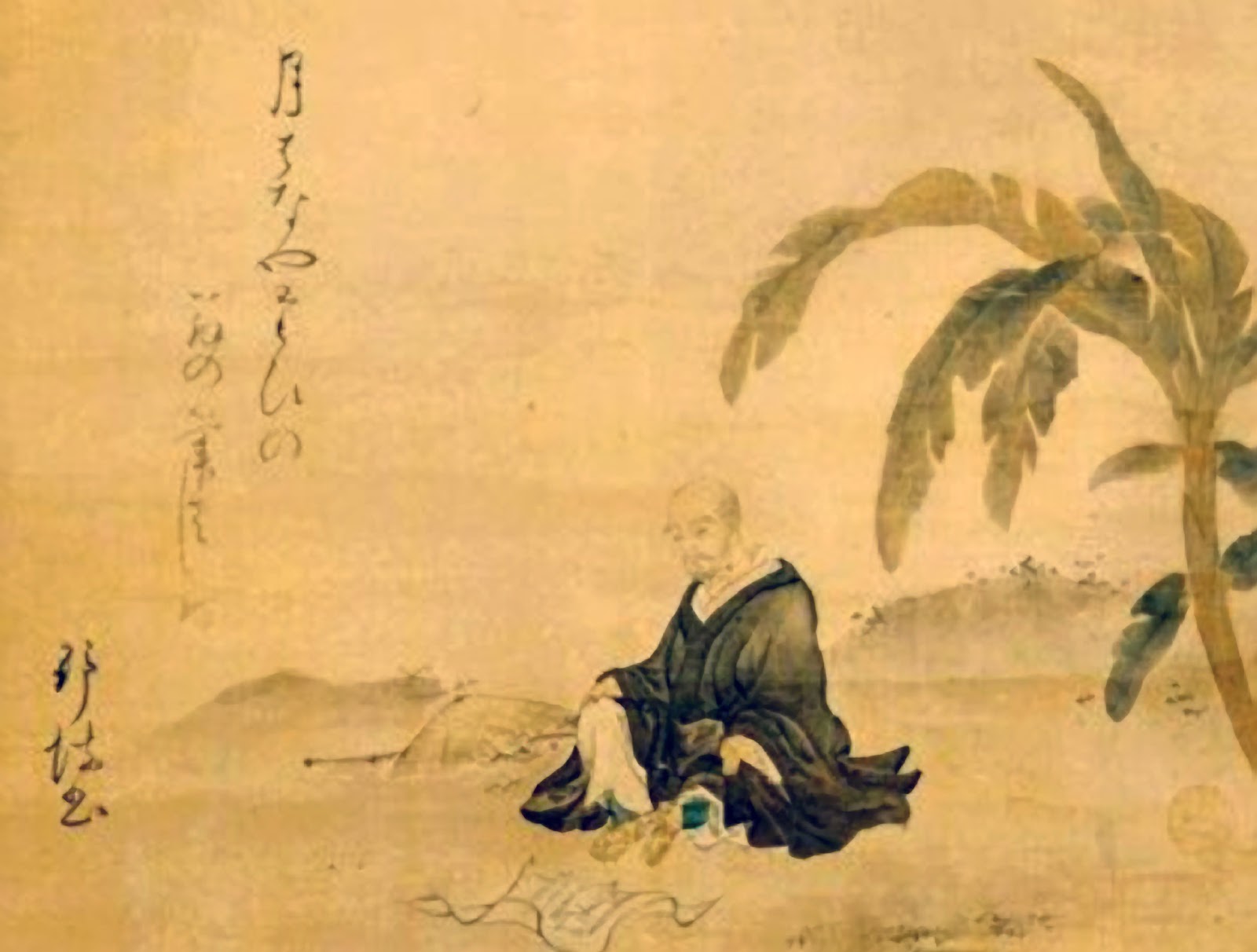Haiku is a traditional Japanese poem consisting of three lines and 17 syllables. Unlike Western poetry, haiku rarely rhymes. This poetry conveys layers of meaning by using natural imagery. Zen Buddhism appears throughout haiku, and a specific branch of poetry, called jisei, or death poem, were written just before the writer died in battle or committed ritual suicide. Many haiku are rather funny too. I’ve included a few of those in this selection. Here are some traditional haiku.
| Iio Sogi (1421-1502) | |
| Snow yet remaining The mountain slopes are misty— An evening in spring | Yuki nagara Yamamoto kasumu Yube kana |
| Does not China also Lie beneath the selfsame sky Bound in misery | Morokoshi mo Ame shita to ya tsurakaran |
| Passing through the world Indeed this is just A shelter from the shower. | Mono goto ni Oi wa kokoro no Ato mo nashi |
| Yamazaki Sokan (1464-1552) | |
| Even at the time When my father lay dying I still kept farting. | Waga oya no Shinuru toki ni mo He o kokite |
| Matsuo Basho (1644-1694) | |
| The quiet pond A frog leaps in, The sound of water. | Furuike ya Kawazu tobikomu Mizu no oto |
| Quietness Seeping into the rocks The cicada’s voice. | Shizukasa ya Iwa ni shimiiru Semi no koe |
| The roadside thistle, eager To see the travelers pass Was eaten by the passing ass! | Michinobe no Mukuge wa uma ni Kuware keri
|
| Stabbed in a dream— Or was it reality? The marks of a flea. | Kiraretaru Yume wa makoto ka Nomi no ato |
| Yamamoto Kakei (1648-1716) | |
| I have no wife, said I. And so my landlord gave to me A tiny maiden flower. | Tsuma nashi to Yanushi ya kureshi ominaeshi |
| Uejima Onitsura (1661-1738) | |
| Although I say, “Come here! Come here!” the fireflies Keep flying away! | Koi koi to Iedo hotaru ga Tonde yuku |
| This autumn I’ll be looking at the moon With no child on my knee. | Kono aki wa Hiza ni ko no nai Tsukimi kana |
| Ogawa Shushiki (1669-1725) | |
| The cherry by the well Is dangerous for one Drunken on wine | Idobata no Sakura abunashi Sake no ei |
| Kaga no Chiyo (1703-1775) | |
| The butterfly— What are the dreams that make him Flutter his wings? | Chocho ya Nani o yume mite hanazukai |
| I sleep…I wake… How wide The bed with none beside | Okite mitsu Nete mitsu kaya no Hirosa kana |
| Tan Taigo (1709-1771) | |
| The change of servants Her tears Splash on the tatami. | Degawari ya Tatami e otosu Namida kana |
| Yosa Buson (1716-1783) | |
| There’s no loincloth On that butt blown in view – In the spring breeze. | Fundoshi senu Shiri fukareyuku Haru no kaze |
| Kobayashi Issa (1763-1827) | |
| “The peony was as big as this,” Says the little girl Opening her arms. | Kore hodo to Botan no shikata Suru ko kama |
| Ours is a world of suffering, Even if cherry-flowers bloom. | Ku no shaba ya Hana ga kirakeba Hiraku tote |
| Masaoka Shiki (1867-1902) | |
| I’m trying to sleep— Go easy When you swat flies. | Nemuran to su Nanji shizuka ni Hae o ute |
| How much longer Is my life? A brief night… | Yomei Ikubaku ka aru Yo mijikashi |
References
Bowers, Faubion. (1996) The Classic Tradition of Haiku: An Anthology. New York: Dover Publications
